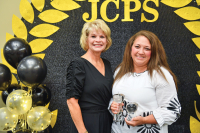Passionate about print: a review of A Literate South

For many years, most of us who read histories and biographies about America between 1800 and 1865 assumed the seat of literacy and learning was in New England. The plantation and professional classes of the Antebellum South were of course readers, and in some cases writers, relatively wealthy men and women who enjoyed the luxury of newspapers or the novels of Sir Walter Scott. Few would have thought the yeoman farmers and townspeople of that age and place might be equally passionate about print and literature.
Apparently, that impression was about as wrong-headed as possible.
In A Literate South: Reading Before Emancipation (Yale University Press, 2019, 258 pages), Beth Barton Schweiger demolishes this perception. Author of The Gospel Working Up and editor of Religion in the American South, Schweiger brings a lifelong interest in the South and detective skills worthy of a Sherlock Holmes to the subject of Southern literacy and writing.
Although she uses scores of people to make her case, Schweiger focuses most of her attention on two pairs of sisters: Amanda Cooley and her younger sister Betsy of Southwestern Virginia, and Jennie and Ann Speer of Piedmont North Carolina. All four women were typical in some respects of rural America at mid-century, with their days filled with household chores, sewing, cooking, and taking care of the infirm. These women were of the same class, were all devout in one or another in their religious faith, and felt a strong attachment to their families.
The two families did differ one respect: slavery. The Cooleys owned a few slaves while the Speers were adamantly anti-slavery.
But both Cooleys and Speers, especially these four young women, were readers and writers.
Related Items
As Schweiger demonstrates, the reading material available to these young women was extensive. “Schoolbooks, Bibles, testaments, hymnbooks, songsters, tracts, newspapers, magazines, pamphlets, broadsides, and almanacs poured into post offices and general stores and out of peddlers’ packs,” and found their way into the hands of readers. This thriving technology of print and a growing efficiency of distribution revolutionized the lives of hundreds of thousands of Southerners.
From Amanda Cooley’s journal, we have accounts of the entire family reading, including the slave Jincy, either aloud or separately, from magazines, tracts, and other material. Amanda had studied spelling and grammar, and writes mostly of her daily life: the fabrics she weaves, church meetings, funerals, pigs slaughtered. Her journal proved especially valuable to Schweiger because Amanda also records what the family read: “English novels, newspapers from Virginia, Philadelphia, and Missouri, Maine humorists, the Bible, biographies…advice literature, and several national magazines.”
Like the Cooleys, Jennie and Ann Speer studied spelling and grammar, but they advanced forward into rhetoric, the art of forming sentences and paragraphs into effective and moving prose. Both young women attended Greensboro Female College, and Jennie then spent a year at Mount Holyoke Female Seminary in Massachusetts, the first woman from North Carolina to have done so.
This advanced education in composition led to a marked difference between the writing produced by the Speer sisters and the more mundane journal entries of Amanda Cooley. Whereas Amanda recorded daily life, Jennie and Ann tended to address topics of faith, love, and death in their writing, following the rhetorical models they had studied.
A Literate South offers more than just account of Southern readership and print technology. Schweiger describes the effects of literacy on slavery and why some Southern states forbade the teaching of reading and writing to slaves. She devotes a chapter to the impact of hymnals and religious works on slave and free alike; she examines the rampant consumption (tuberculosis) that took so many lives at that time, including those of Jennie, Ann, and Amanda at a relatively young age; she shows us that slavery was an often debated and divisive subject among Southerners.
What impressed me most about A Literate South was the care with which so many of those cited in this study approached the English language. Whether taught at home or in private academies, students received rigorous training in composition. They climbed the ladder recommended from the time of Ancient Greece to today’s classical schools: grammar, logic, and rhetoric. They appreciated good writing in those magazines and books they were reading, and wanted to duplicate that sense of grace and style in their own letters, journals, and essays.
At the end of A Literate South, Beth Schweiger concludes:
The only surviving physical traces of the Cooleys, Jincy, and the Speers are some carved tombstones, fragile manuscripts, tintypes, and a few lines of sterile descriptions in public records and newspapers. Handwriting, not print, preserved their stories. We remember these women because of the memories and work of their descendants. The story of readers in the Blue Ridge, then, warns us against the banality of technological determinism. Culture is made by human memories, human voices, and human hands. No machine can reproduce this richness.
Allen Speer, long a professor at Lees-McRae College and now retired, is one of those descendants. In Sisters of Providence: The Search for God in the Frontier South 1843-1858 (The Overmountain Press, 2000, 290 pages) which he edited along with his wife Janet, Speer honors Jennie and Ann Speer by bringing their writing into print. Here we have excellent insights into the hearts and minds of two women who regarded slavery as wicked, who advocated for women’s rights, and who abided by the tenets of a deeply held faith. Beth Schweiger credits the Speers and the Cooley family for having “lovingly preserved their family history.”
Both Sisters of Providence and A Literate South shine a new light on our American past. Highly recommended.
(Jeff Minick is a writer and teacher. This email address is being protected from spambots. You need JavaScript enabled to view it..)









